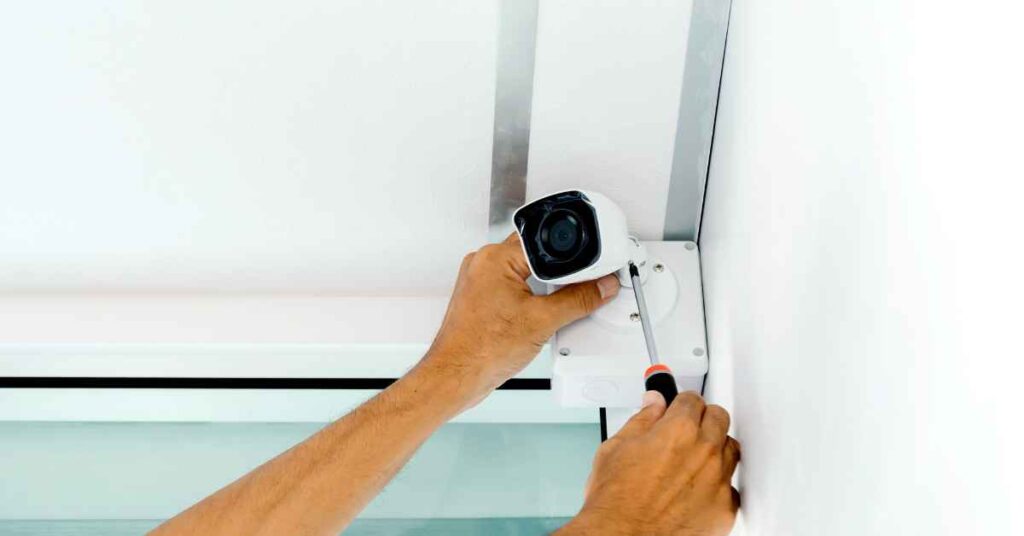Selecting the right security cameras for your property involves various considerations, and among the most crucial is the field of view (FoV). The FoV determines the extent of the area a camera can cover, influencing its effectiveness in cctv installation service. This article provides a comprehensive guide on how to evaluate the field of view when choosing security cameras for your property.
Understanding Field of View (FoV) Basics
Before diving into camera specifications, it’s essential to grasp the basics of the field of view. The FoV is essentially the observable area that a camera captures. It is measured in degrees and represents the width and height of the scene visible through the camera lens. A wider field of view covers more area but may sacrifice details, while a narrower FoV captures more details but covers a smaller area. Striking the right balance is key, and understanding the relationship between FoV, camera placement, and the property layout is crucial for effective surveillance.
Determining Coverage Needs for Different Areas
Evaluate the specific areas you need to monitor on your property. Consider the distances involved and the level of detail required for identification. For example, a camera covering the front yard may need a wider FoV to capture the entire area, while a camera focused on the entrance may benefit from a narrower FoV for detailed facial recognition. Understanding the coverage needs for different areas enables you to choose cameras with varied FoV to ensure comprehensive surveillance tailored to specific requirements.
Balancing Detail and Coverage with Varifocal Lenses
Varifocal lenses offer flexibility in adjusting the field of view, providing a balance between coverage and detail. Unlike fixed lenses, varifocal lenses allow users to manually adjust the focal length, altering the FoV accordingly. This feature is particularly useful when dealing with changing surveillance requirements or varying distances. Cameras equipped with varifocal lenses provide versatility, allowing you to adapt to different scenarios without the need to change the entire camera setup.
Utilizing PTZ Cameras for Dynamic Field of View
Pan-Tilt-Zoom (PTZ) cameras take the concept of dynamic field of view to the next level. With the ability to pan horizontally, tilt vertically, and zoom in and out, PTZ cameras provide unparalleled flexibility. They allow users to actively control and adjust the FoV based on real-time monitoring needs. While fixed cameras have a static FoV, PTZ cameras offer dynamic coverage, making them ideal for properties with changing surveillance requirements or those seeking an active deterrence capability.
Calculating FoV with Respect to Camera Placement
The placement of security cameras plays a crucial role in determining their effective field of view. Factors such as mounting height, angle, and distance from the target area influence the FoV. Utilize online FoV calculators provided by camera manufacturers or third-party tools to estimate the coverage based on camera specifications and placement. Calculating the FoV ensures that you select cameras with the appropriate lens and focal length for optimal coverage in specific locations around your property.
In conclusion, evaluating the field of view is a critical aspect of selecting security cameras for your property. Understanding FoV basics, determining coverage needs, exploring varifocal lenses and PTZ cameras, and calculating FoV with respect to camera placement are essential steps in ensuring effective surveillance tailored to your property’s unique requirements.
FAQs
- What is the ideal field of view for outdoor security cameras?
- The ideal field of view for outdoor security cameras depends on the specific monitoring requirements. A wider FoV is generally preferred for outdoor areas to cover more ground.
- Can I change the field of view after installing a fixed lens camera?
- With fixed lens cameras, the field of view is determined by the lens specifications and cannot be adjusted after installation. Choosing the right lens during the selection process is crucial.
- Do all PTZ cameras have the same field of view capabilities?
- No, the field of view capabilities of PTZ cameras can vary. Some may have a wider range of pan, tilt, and zoom, providing more flexibility in adjusting the FoV.
- Can varifocal lenses be adjusted remotely?
- No, varifocal lenses require manual adjustment. Users need to physically adjust the lens to change the field of view. PTZ cameras, on the other hand, allow remote adjustment.
- How do I calculate the field of view for security cameras on my property?
- Use online FoV calculators provided by camera manufacturers or third-party tools. Input camera specifications and placement details to estimate the coverage for specific areas.


